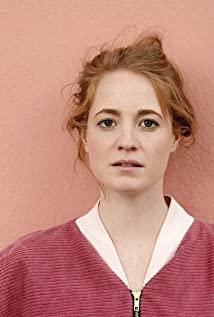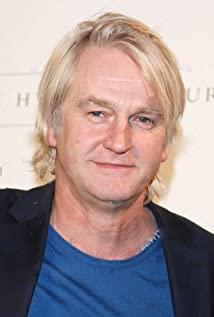The White Ribbon Movement is a movement of Canadian men calling for an end to violence against women, symbolizing that men will never use violence and that violence will no longer be condoned. The cause is that at the end of 1989, a man in Canada shot and killed 14 young women at a Montreal university because he believed that development opportunities were taken away by women. Two years later, a group of men started this movement hoping that the public should reflect on this tragedy and that men should no longer remain silent about the violence men inflicted on women. At present, the white ribbon movement has been extended to the United States, Europe, Australia and South Africa. In Canada, almost 500,000 people wear white ribbons every year. The sponsoring organization of the White Ribbon Movement encourages men to wear white ribbons every year from November 25th to December 6th. Origin of the "White Ribbon" campaign: Eliminating violence against women is a shared responsibility of society.
Although the white ribbon is a symbol of purity and innocence, after watching the entire film, you will see that children who grew up in the morbid environment of the Nazi era became free to lie, indifferent, and violent even when they wore the white ribbon. The little white ribbon appears so small and pale in the face of a system that has lost its humanity.
The background of the story is a village in northern Germany from 1913 to 1914. The whole story is about adults, but the protagonists are growing children. The story begins with a doctor falling from a horse, and a series of tragedies occur in the middle: the tenant farmer's wife falls into the cellar and falls to her death, the baron's son is thrown into the sawmill after taking off his pants and beaten to death, and the mentally handicapped Cary is tortured and blinded. ...... But who is the culprit is always confusing, the film has always created suspense, and the answer has changed more than once with the narrator's perspective: the son of the peasant woman, the housekeeper, the nanny, the teacher... But as the point of view is directed towards the most vulnerable children, towards the end it shifts to the missing doctor and midwife. Until the outbreak of the war, fear and suspicion still loomed over the town, and the problem remained unsolved. But as the suspense unfolds, the narrator takes us through every type of person in the village, whether it's the stern priest, the serious doctor, the angry and weak peasant family, and the children. Clues are ubiquitous and nowhere to be found like a mist that never dissipates.
However, in our assumptions over and over again, the problem points to the heart of the whole film—violence, sin, lovelessness. Every human being is a demon, conceptually, psychologically or practically. The rigidity of priests, the cynicism of doctors, and the rudeness of housekeepers. Even in a way, these authority figures are not evil, even doting, like the priest said: I won't be able to sleep tonight because I have to hurt you tomorrow. He was convinced of what he was doing, that he did love his children, but that was the scary part. As the author puts it: the balance of good and evil is always there, the question is how circumstances and personal choices tip it like one side. The world is deeply unfair because not every social or family state offers opportunities for good or the same ability to reflect on one's actions and choices. But for those who have the opportunity and the ability, the question of good and evil is looming, and it also means how you accept what you do and how you accept responsibility.
In the movie, the authority of the priest, the baron and the doctor represses the children's humanity. The children are not allowed to eat after visiting their injured partners after returning home late, and they scold them for corporal punishment. Tied to the bed every night. Hence the quote from the Bible: I am a jealous God, and I will punish him who hates me, from the father to the son, to the third and fourth generations. This ancient sin, the violence that has been passed down from generation to generation, is extremely terrifying, because without proper guidance, the children took the priest's admonitions seriously, which gave them a legitimate reason to torture the weakest and weakest people in the village.
This is not a purely fascist or religious theme, nor is it the problem of German families at that time, or even the problem of old times, but the problem that every family and everyone has to face, those good and evil The balance of those who take responsibility for you, and don't let your side become a breeding ground for terrorism of all kinds. Once you set your ideal as an ideology, all those with dissenting opinions or neutral attitudes will be turned into enemies.
Ps: The color of the film: The whole film uses a black background, just like Jiang Wen's "The Devil is Coming", abandoning the impact of color and vision, and correct/wrong, allowed/prohibited under cold colors, and distorted things are more show itself. And under this stern color, the sense of fear has been shrouded, the hypocritical appearance of adults, the dirty heart, the faces of children's angels and the hearts of snakes and scorpions are all impacting your senses in this seemingly quiet state. The sticky scarlet is even more terrifying in black and white.
At the same time, in the medium and long shots, the background is stable, like a photo or a stage, people come and go, as if a cold-eyed person is watching everything happening in the town. Everything is so far away, and everything is so close at hand.
Pps: I was worrying about the title when I was writing this, and suddenly heard this song.
Ma Fei's "Zoo"
lyrics:
The monkeys here don't have the golden hoops
, the tigers here won't touch Wu Erlang
, and the parrots sing all day long.
We grow up here happily,
there are no cages, walls, and grids
. They never go out. Do n't even
want to come and
see the scenery with me
But if you want to get out of here, you don't want
to come with me and
let's get used to this place and
watch them repeat the madness
one day the monkey finds the golden hoop
one day the tiger meets the warrior Erlang
, one day, the parrots don't sing anymore.
We grow up here happily.
There are no cages, walls, or power grids
. They never
want to come and
see the scenery
here
. come with me
let's get used to this place
Watch them repeat the madness
Come with me to
see the scenery
but want to get out of here You have no hope
Come with me to
make us fit into this place
Watch them repeat the madness
View more about The White Ribbon reviews










